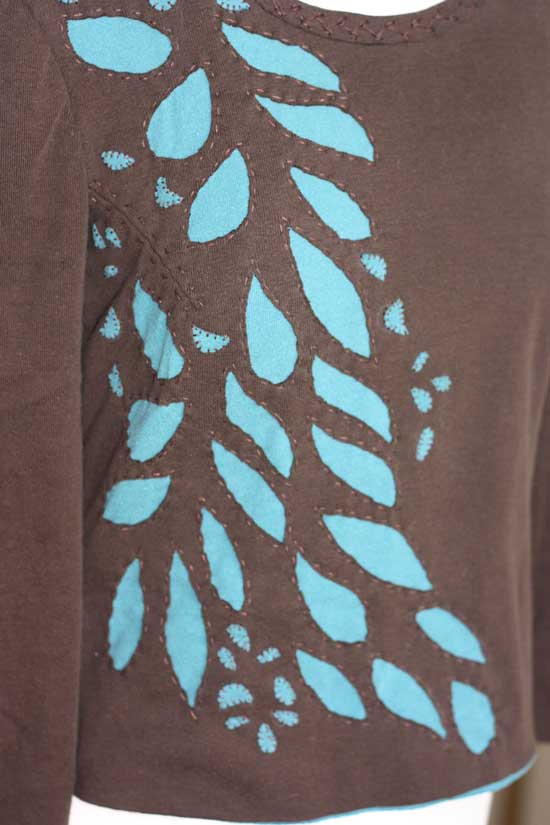Embroidered Labels
 Saturday, February 18, 2012 at 9:41PM
Saturday, February 18, 2012 at 9:41PM Many years ago I asked a friend to digitize a little piece of clip art that I used on my business cards at the time so that I could stitch out labels for my handmade clothing. My logo was a simple hanger embellished with a flower. Back when I was doing some dressmaking for hire I used the business name Juliet, Couture and Bridal (JCB being my initials). The first label I created looked something like this:

This was stitched on ribbon. I went on to stitch the design out on various fabrics. This was my favorite,

stitched on a pale grey and white checked linen. I particularly liked using a patterned background.
Last week I realized I was out of pre-stitched labels and sat down at my machine to make some more. For some reason, my old design was not speaking to me, and I decided it was time for a makeover of my label. I still wanted to use a hanger design and found an appropriate one on the internet. I'm currently loving the floss stitch designs I got from Jolson's Designs so I used one of those. Once I got the design looking the way I wanted, I started concentrating on color and fabric choices. I looked at my local fabric store for some light colored checked fabric like the one I used above, but didn't find anything in the color I was looking for. They did have, however, a subtle paisley print cotton duck which I thought would work well.

I used colors similar to the designs here on my blog. Here are the labels all stitched out and waiting to be cut.

and here is a completed label.

I particularly like how much depth and interest the print background adds. I backed the fabric with a fusible tricot interfacing, cut the edges with pinking shears and then applied a thin line of Fray Block around the perimeter.
While hunting through my closet for examples of my former labels, I was dismayed to discover how few of my garments actually have labels in them. So, I'm hoping to do better this year and remember to sew labels into my creations. I am also going to go back and "retro-fit" some of my older clothes with some of my new labels where possible. After all, what's a designer original without its label?
 labels in
labels in  garments,
garments,  machine embroidery,
machine embroidery,  sewing
sewing 

















